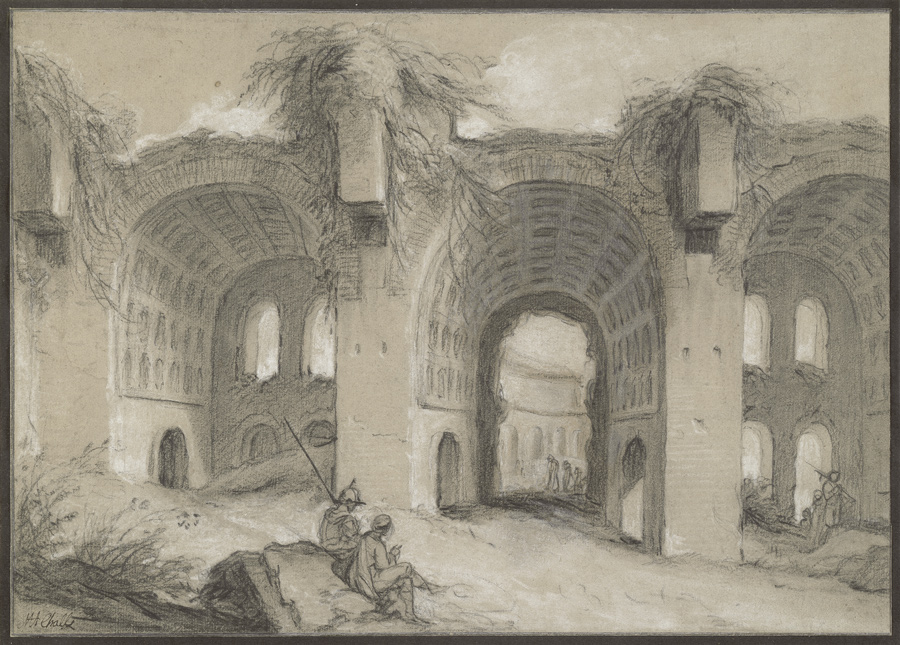Loading the page ...
Charles-Michel-Ange Challe
(1718–1778, Paris)
A Corner of the Forum Romanum with the Ruins of the Basilica of Maxentius. Black and white chalk on greyish paper. 30.4 x 42.4 cm. Signed in pen and brown ink: "MA Challe".
The painter, architectural draughtsman and printmaker, Charles-Michel-Ange Challe, received his training from Jean André, François Lemoyne and François Boucher. Having won first prize at the Académie royale in 1741, he subsequently held a scholarship at the Académie de France in Rome from 1742 to 1749. Challe’s years in Rome proved crucial for his artistic development. He associated with like-minded young French art students who were intensely interested in the reception of antiquity and evoked the splendour of Rome in imaginary architectural capriccios. They used to meet at the premises of the bookseller and print publisher, Jean Bouchard, not far from the Academy. Here Challe met Giovanni Battista Piranesi, who had come to Rome from Venice in 1740 and was at the outset of what was to prove a significant artistic career. Piranesi’s publications and series of prints, such as the Antichità Romane de’ tempi della Repubblica (1748), were the source of the considerable authority he enjoyed among the group of Italian and foreign artists in Rome and he exerted a major influence on Challe’s artistic oeuvre. Challe was very prolific as a draughtsman in Rome, producing a large number of drawn landscapes, designs for festive decorations and architectural capriccios in the style of Piranesi, which are deeply indebted to the drawing style of his great Venetian model.
The present, sensitively observed landscape with ruins reveals a more poetic side of Challe’s talent. The work, probably produced during the time he spent in Rome, depicts the ruins of the Basilica of Maxentius on the Forum Romanum. The detail is dominated by the imposing ancient remains which Challe has rendered accurately and without the drama and exuberant imagination that are so characteristic of Piranesi. The individual staffage figures lend the landscape a lyrical, pastoral note, while the massive ruins overgrown with ivy are a wistful testimony to Rome’s former grandeur.
